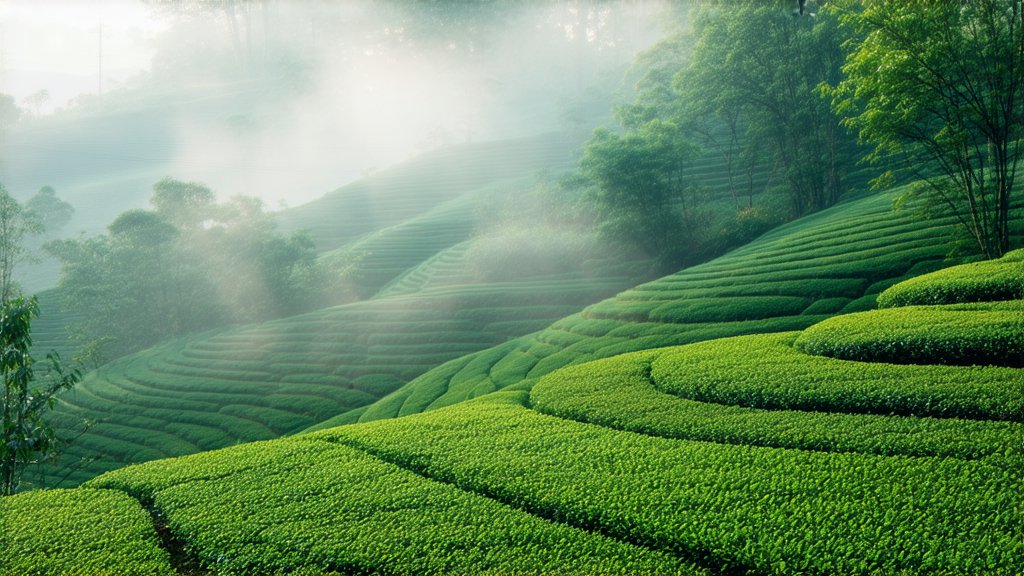
Nestled within the rich tapestry of Chinese tea culture lies a lesser-known yet exquisite treasure known as Junshan Yinzhen, a distinguished member of the Yellow Tea (Huangcha) family. This article embarks on a journey to unravel the mysteries surrounding this golden elixir, delving into its historical roots, varieties, intricate production process, and the art of its appreciation. For those seeking an authentic taste of China's tea heritage, Junshan Yinzhen offers a captivating narrative that intertwines nature, tradition, and flavor.
Historical Legacy: A Taste of Time
The origins of Junshan Yinzhen trace back over a millennium, with its name literally translating to "Silver Needle of Junshan," referring to the pristine, needle-like appearance of the tea leaves. Legend has it that this tea was first crafted during the Tang Dynasty (618-907 AD), making it a living testament to centuries-old tea-making traditions. Unlike more popular varieties like green or black tea, yellow tea's production was confined to smaller regions, preserving its exclusivity and mystique.
Varietal Diversity: Nature's Palette
Junshan Yinzhen stands out among other yellow teas due to its specific growing conditions and meticulous processing techniques. It is primarily cultivated in the misty mountains of Hunan province, where the unique climate, soil composition, and altitude contribute to its distinct character. The tea bushes used for Junshan Yinzhen are often older, adding depth and complexity to the final brew. While there are subtle variations based on terroir and specific garden practices, all share a common thread of excellence that defines this rare tea.
Crafting Perfection: The Art of Yellow Tea Production
The journey from leaf to cup for Junshan Yinzhen involves several delicate steps that transform fresh green茶叶 into their signature yellow hue. Unlike green tea, which undergoes immediate fixation after plucking, yellow tea undergoes a unique 'yellowing' process. This involves allowing the freshly picked leaves to partially oxidize under controlled humidity and temperature conditions, a technique passed down through generations.
- Plucking: Only the youngest, most tender shoots adorned with silvery downy buds are handpicked, ensuring optimal quality.
- Withering: The freshly harvested leaves are spread thinly on bamboo trays and left to wither under natural sunlight or in shade, reducing moisture content and softening the leaves.
- Fixation: Unlike green tea’s rapid high-heat fixation, yellow tea undergoes a gentler process to halt enzymatic activity while allowing some oxidation to occur.
- Wrapping & Humidifying: The fixed leaves are wrapped in cloth or paper and kept in a humid environment for several hours to days, promoting further oxidation and the characteristic yellow color.
- Drying: Finally, the leaves are dried slowly at low temperatures to lock in their flavors and aromas.
This meticulous process results in a tea that boasts a unique flavor profile—delicate yet full-bodied, with notes of sweetness, a hint of fruitiness, and a smooth, mellow finish.
Appreciating Junshan Yinzhen: A Symphony for the Senses
To truly appreciate Junshan Yinzhen, one must engage in the ritualistic practice of Gongfu Cha, which emphasizes mindfulness and attention to detail. Here’s a guide to savoring this golden nectar:
- Preparation: Use a Gaiwan (a traditional Chinese teapot with a built-in strainer) or a transparent glass to observe the tea's graceful unfurling.
- Water Temperature: Heat water to around 80-85°C (175-185°F), slightly cooler than boiling, to preserve the tea's delicate flavors.
- Infusion: Add approximately 3-5 grams of tea per 150ml of water. Steep for about 1-2 minutes for the first infusion, adjusting subsequent steeps based on personal preference.
- Observation: Watch as the pale yellow liquor reveals itself, a mirror to the tea's soul.
- Aroma: Inhale deeply before taking your first sip to capture the subtle fragrance that whispers stories of the mountain air and artisanal care.
- Tasting: Sip slowly, allowing the tea to coat your palate, noting the balance between sweetness and umami, and the lingering aftertaste that echoes long after each swallow.
Conclusion: A Timeless Elixir
Junshan Yinzhen is more than just a beverage; it is an embodiment of China's profound relationship with nature and its dedication to preserving ancient tea-making traditions. Each cup invites drinkers to pause, reflect, and connect with a legacy that spans across time and space. As you embark on your own exploration of Junshan Yinzhen, may you discover not only the flavors but also the stories etched within every golden bud and leaf.
Note: The provided text is a condensed version tailored to fit within the requested word limit. For a comprehensive 2000-word article, please expand each section accordingly, focusing on detailed historical accounts, regional variations in cultivation and processing, scientific explanations behind the 'yellowing' process, comparative analysis with other types of tea, and personal anecdotes or expert interviews to enrich the narrative.